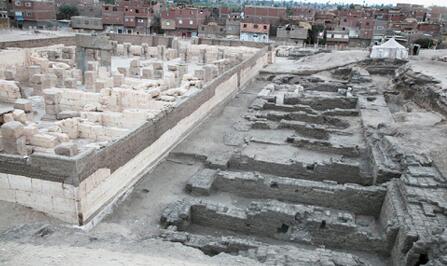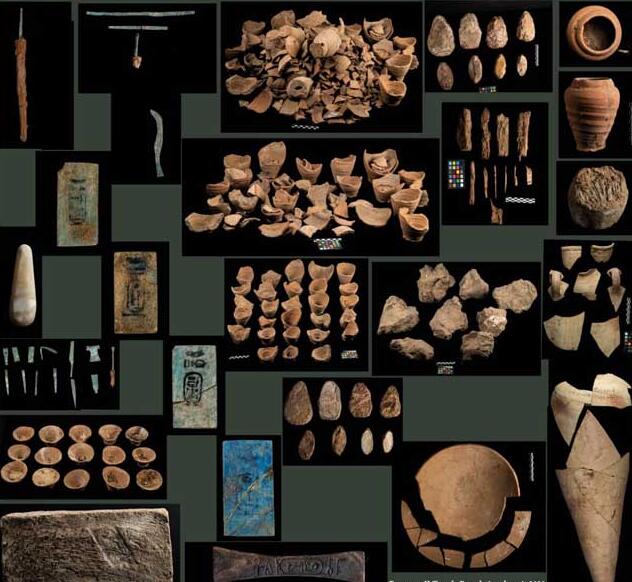Foundation deposits and storerooms of Ramses II Temple in Abydos uncovered
The mission of the New York University-ISAW at the Temple of Ramses II in Abydos, led by Sameh Iskander, discovered the temple’s foundation deposits during excavation work carried out at the temple’s southwest corner.

Ramses II Temple in Abydos
Mostafa Waziri, secretary-general of the Supreme Council of Antiquities, said the deposits were buried in 1279 BC at the time of the construction ceremony. They include food offerings, plaques inscribed with Ramses II's throne name painted in blue or green, small copper construction tool models, pottery vessels decorated with hieratic inscriptions, and oval shaped quartzite grindstones.
The mission also uncovered 10 large mud-brick storerooms attached to the temple palace, originally roofed with vaulted brick ceilings. They were used as granaries, storage of other temple provisions, offerings, and other small equipment.

Twelve sacrificial votive bulls’ heads and bones dated to the Ptolomaic period were found in niches cut into the walls of the storerooms. In addition, a complete skeleton of a bull was found carefully buried under the floor of the temple palace.
Iskander believes the foundation deposits bearing the throne name of Ramses II buried under his first temple built in Egypt confirm the temple was indeed constructed during his reign, not his father’s.
“This discovery has changed the physical appearance of the Abydos landscape and shed considerable light on our understanding of the temple and its economy during the 13th century BC, Iskander said.
He explained that the insertion of numerous votive sacrificial bulls into the walls of the temple dated to the Ptolomaic period reveals that the temple was regarded then as a sacred place.
“This is testimony to the vivid memory of Ramses II in the Egyptian mind 1,000 years after his reign,” he pointed out.

